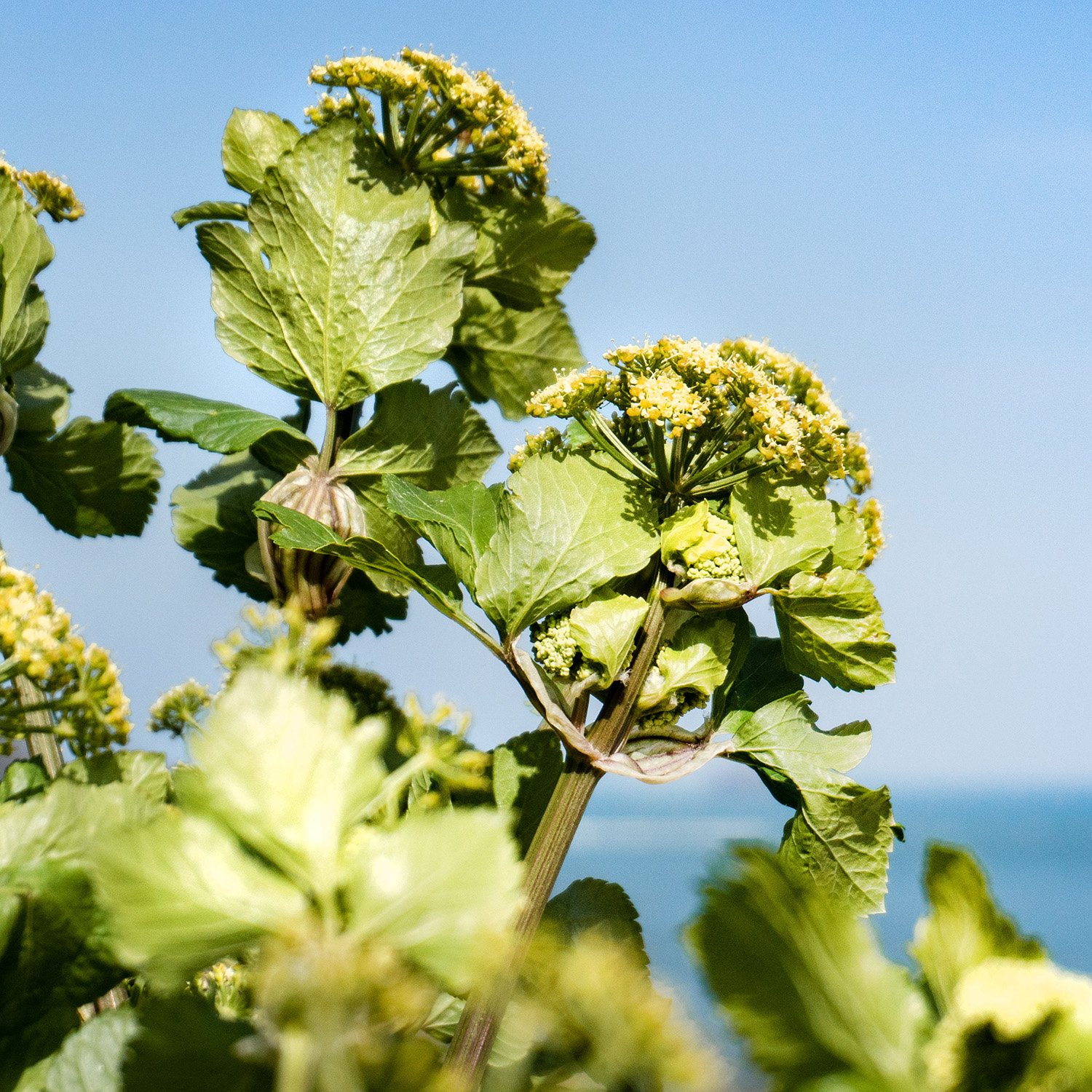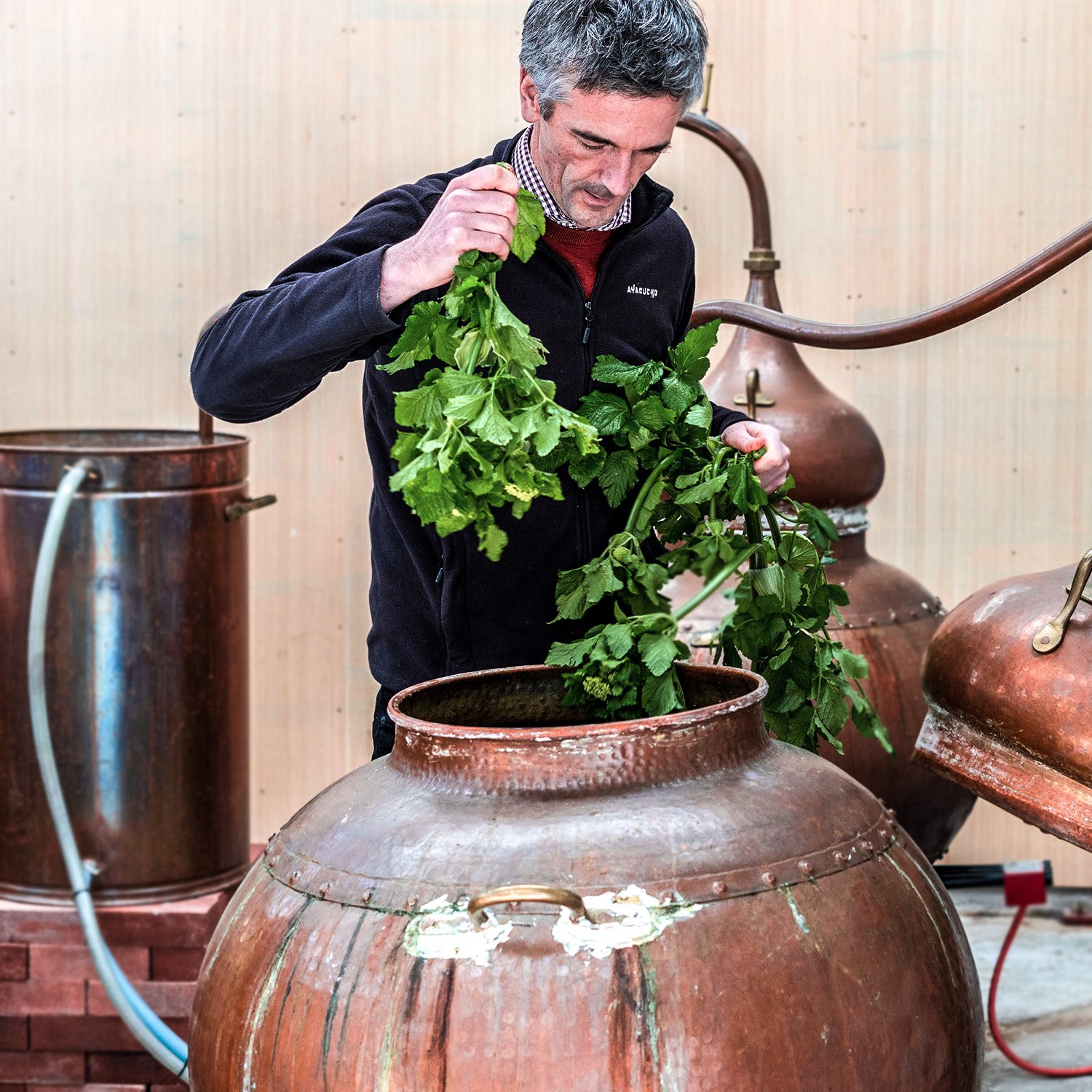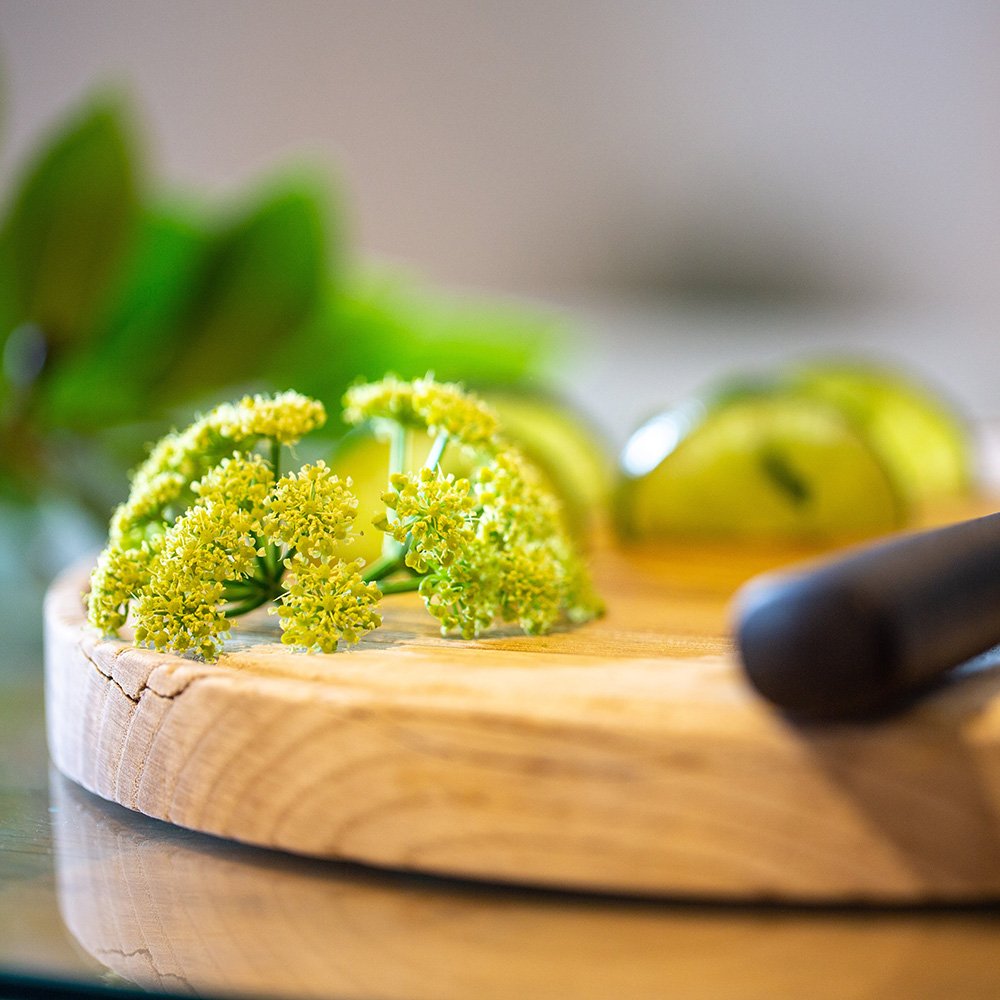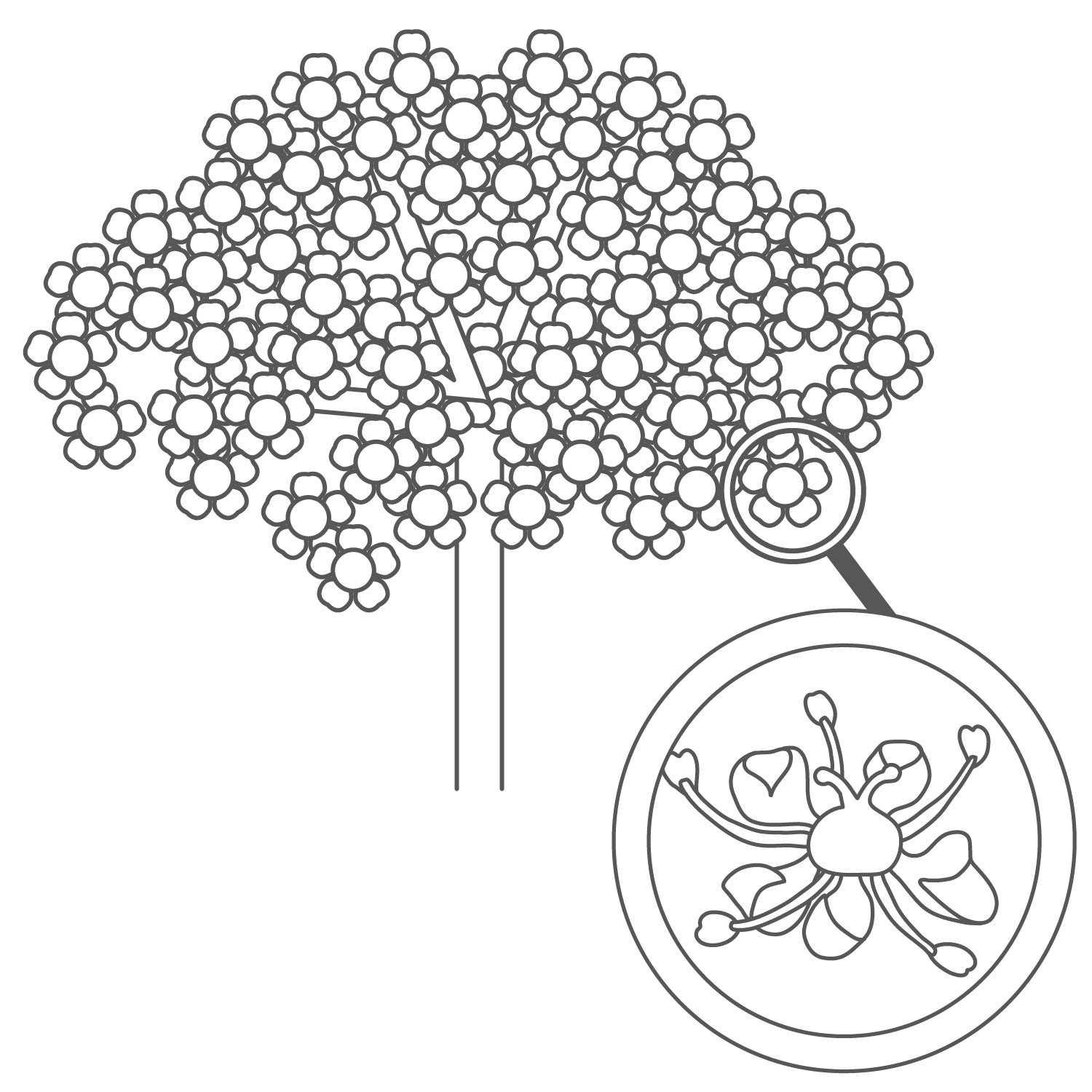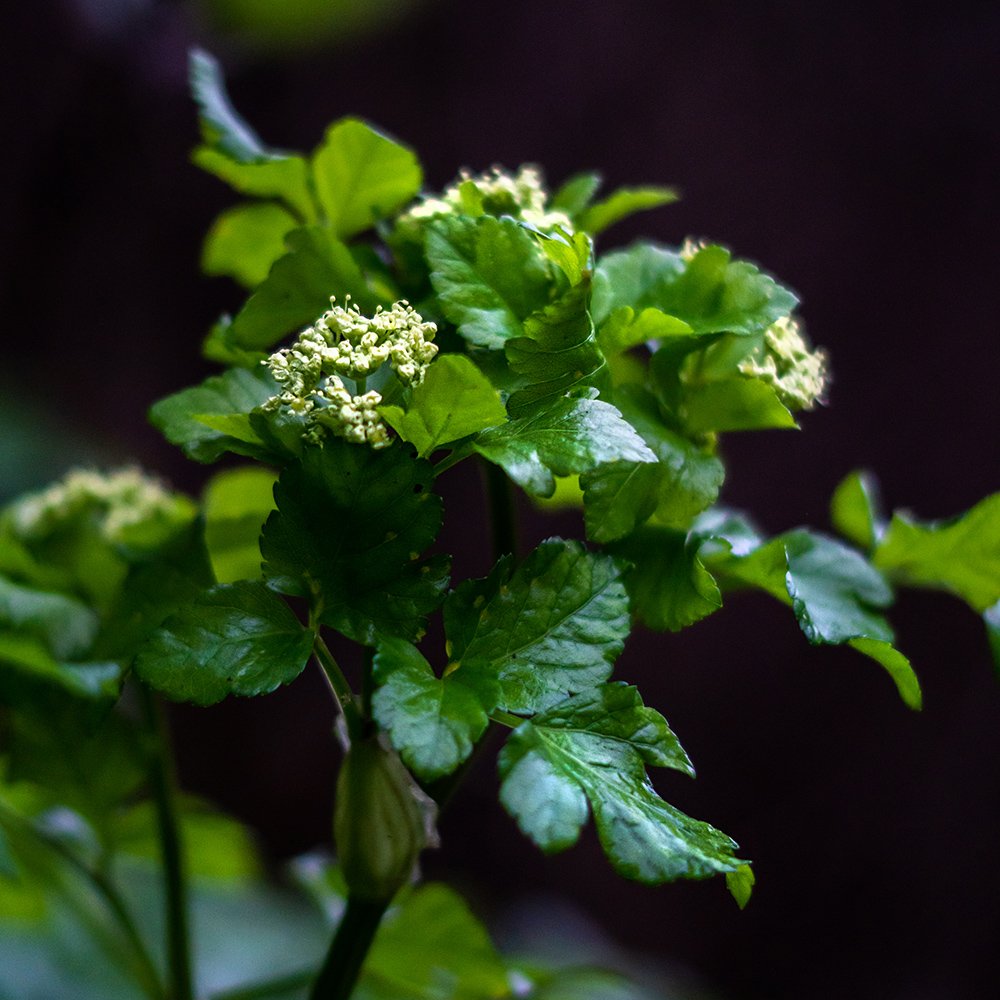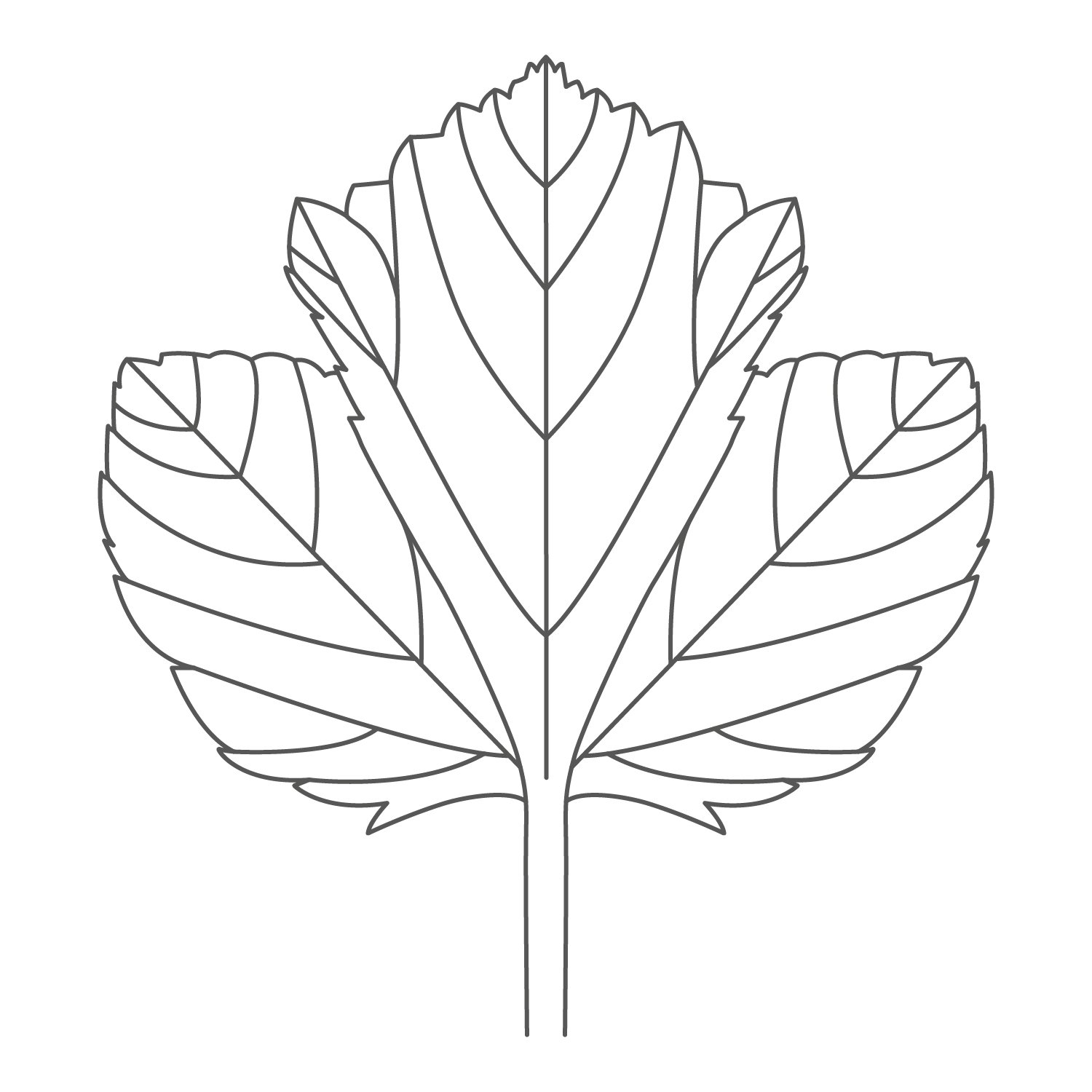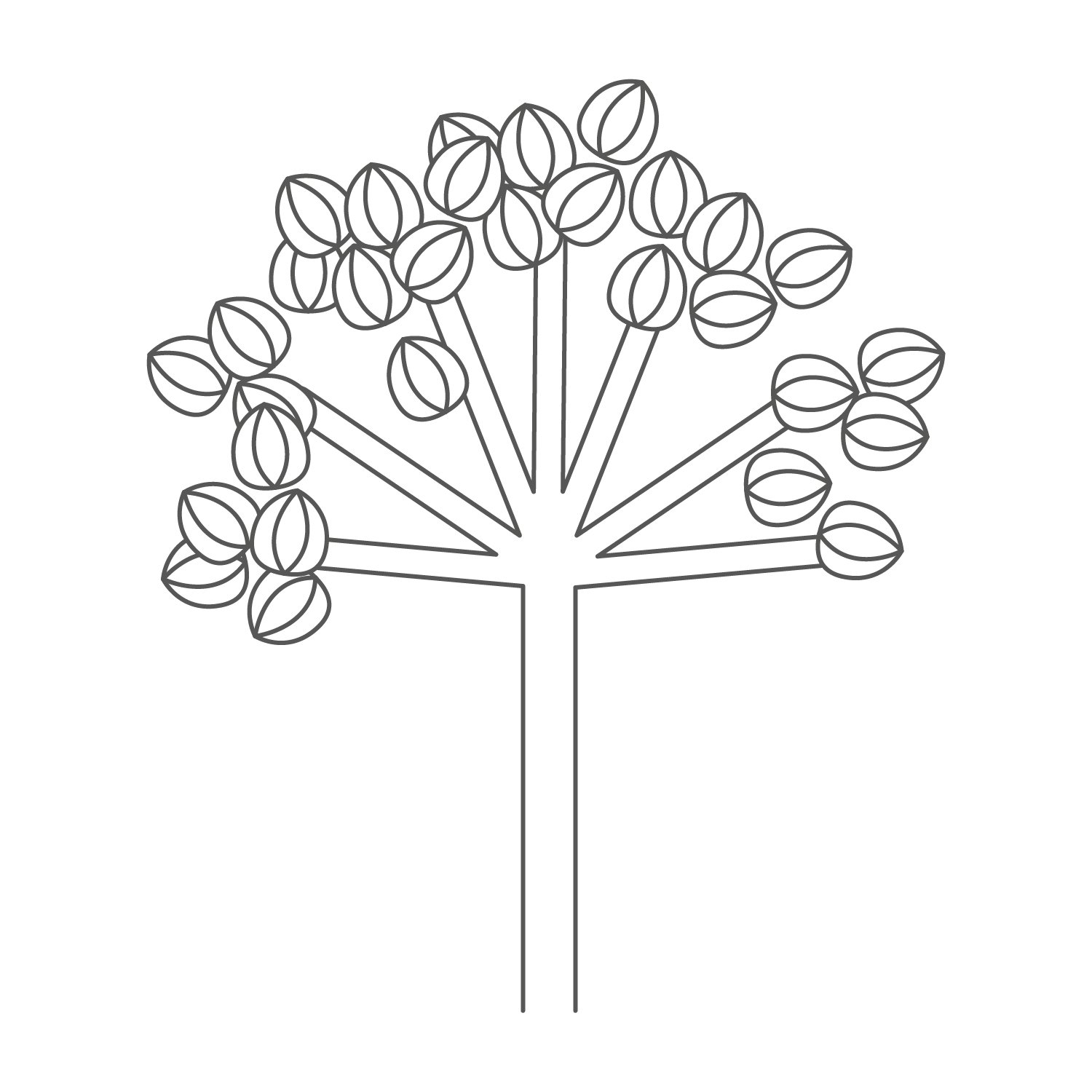Cliff Top foraging
As a child we often holidayed in Cornwall and looking back through old family albums I can find many a photo of my siblings and I enjoying strolls along the coast paths, tucking into picnics amid the gorse. I’ve always loved exploring nature, discovering interesting scents and flavours. It was an instinctive solution when looking for the key ingredient to Padstow Gin…
Alexanders, otherwise known as horse parsley, black lovage or the botanical name smyrnium olusatrum, are a common sight as you weave along the coastal paths of Cornwall. You’ll sometimes find them inland but they mostly enjoy, like us, being by the ocean breeze; hedgerows, sea walls and cliff tops. They start blooming from late February, decorating the countryside with vibrant lime green at their peak.
The taste of the plant is like a sweet, pungent celery and was often used as a herb in Roman times to flavour broths after blanching the leaves and stalks. The flowers, seeds and even the roots of this versatile wild food can be cooked to create a variety of salads, soups and syrups.
If you are acquainted with the smell of myrrh, this is the closest fragrance to the scent given off by alexanders. It is aromatic and sweet with a hint of spice, attracting a host of pollinating insects.
In the final stages of the gin's development at the end of Winter 2020, there was an unending stream of tweaks to the pot-still recipe, but when tasting the trials, I still wasn’t getting the emotional response I craved. It had been a mild winter, and on one very special cliff top walk along the Camel Estuary, that eureka moment came. I saw that the alexanders were already growing strongly but were not yet in flower and having savoured their aroma and taste for decades, the penny dropped: they might just be that botanical, the missing link. Without hesitation, I stuck some of the stems in my pocket and headed straight back to the distillery.
And so it is that the racy, green aroma and natural spicy-sweet taste of alexanders have - since our first bottling of our Original recipe - made them the perfect addition to the smooth barley base and balance of our botanicals. And now, each Spring, I forage the cliff tops - in fact on the edges of the very barley fields - to collect the key ingredient in Padstow Gin.
Identifying alexanders
FLOWERS - The dome-shaped flowers start off a pale yellow in spring and turn a bright lime-green yellow as the summer kicks in.
LEAVES - The leaves are glossy, bluntly toothed and grow in threes.
SEEDS - Once flowering is over in June, the flowers turn to green seeds which eventually turn black.
STALKS - The green stalks are thick and hollow when mature, later turning pale brown, with distinctive lines running vertically.
——
Not to be confused with hogweed, the flowers may look similar but the leaves of hogweed are serrated and the stem hairy. Can also be confused with Hemlock Water Dropwort which is extremely toxic! See here for more information. We don't advise foraging without the help of a professional guide.
Try Padstow Gin and see if you can identify the tastes and scents of the alexanders yourself…




